What is a mind map and what does it look like?

Credit: mindmeister.com
- A central image (or a word) that captures the main subject
- Branches are then added to this image and represent the main themes that flow from this image
- Subsidiary themes are added to each branch to further develop their meaning
Mind maps are a combination of words, images and drawing, colors, emphasis and spacing to create a two-dimensional system that visually represents the subject. Here is an example of a mind map explaining the rules of mind mapping:
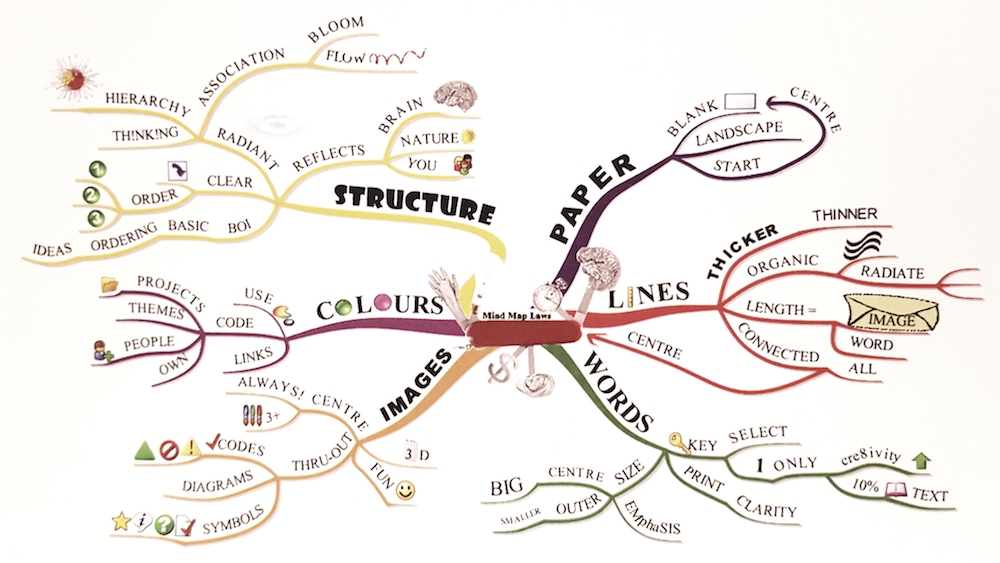
Credit: The Mind Map Book
You can see here that the author started with the image of a Swiss knife, representing what they think of mind mapping. They added different branches, all of them about the important rules of mind mapping. They are labeled with words and small images. Each branch has a different color and starts with a thicker size, showing the importance of the item in the hierarchy of the mind map.
Mind maps will give you clarity and help you organise thoughts, take a decision, self-reflect, study and learn, set up goals or even keep a diary/agenda. You’ll find below some examples of application.
Examples of mind maps

Credit: Jane Genovese
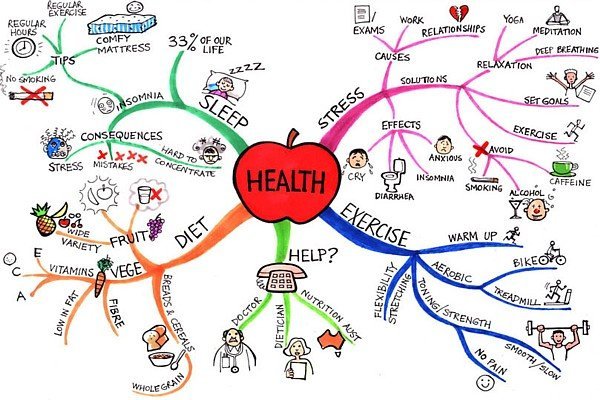
Credit: mindmapart.com
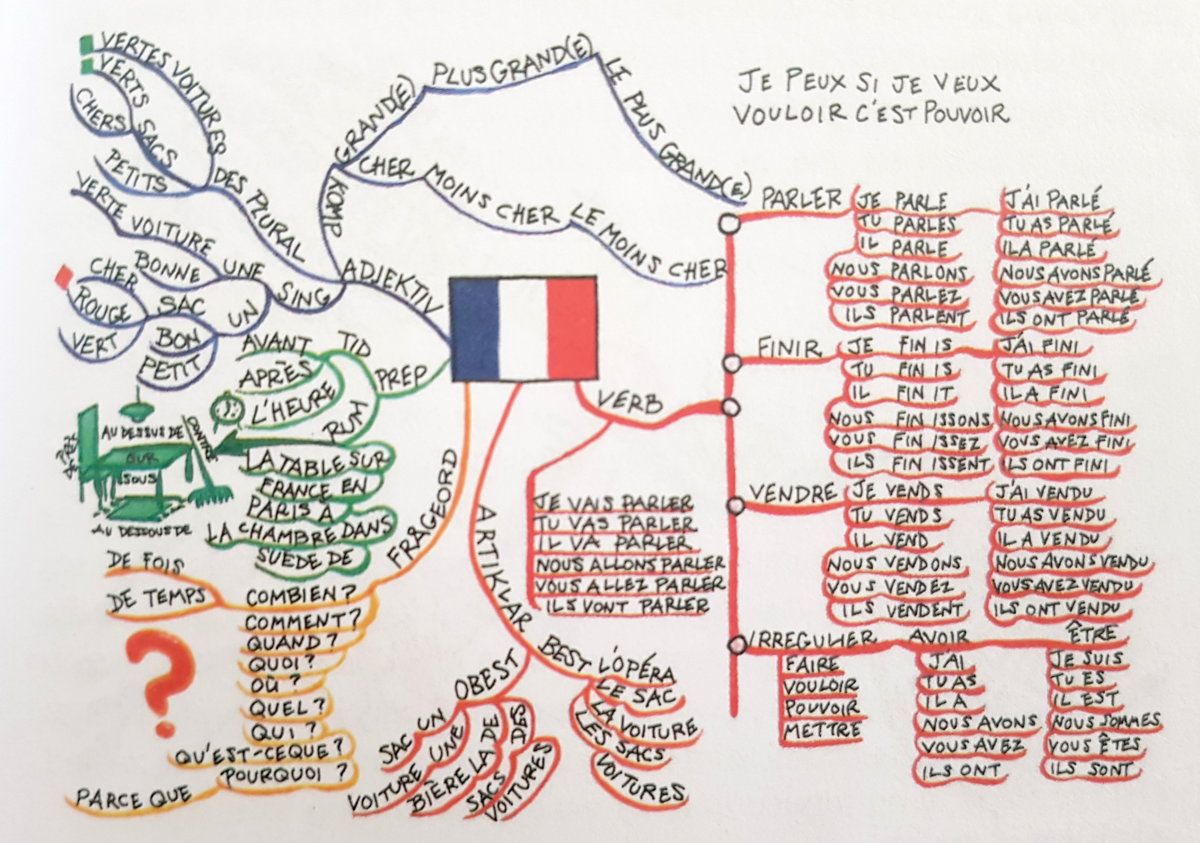
Credit: Lars Soderberg, The Mind Map Book
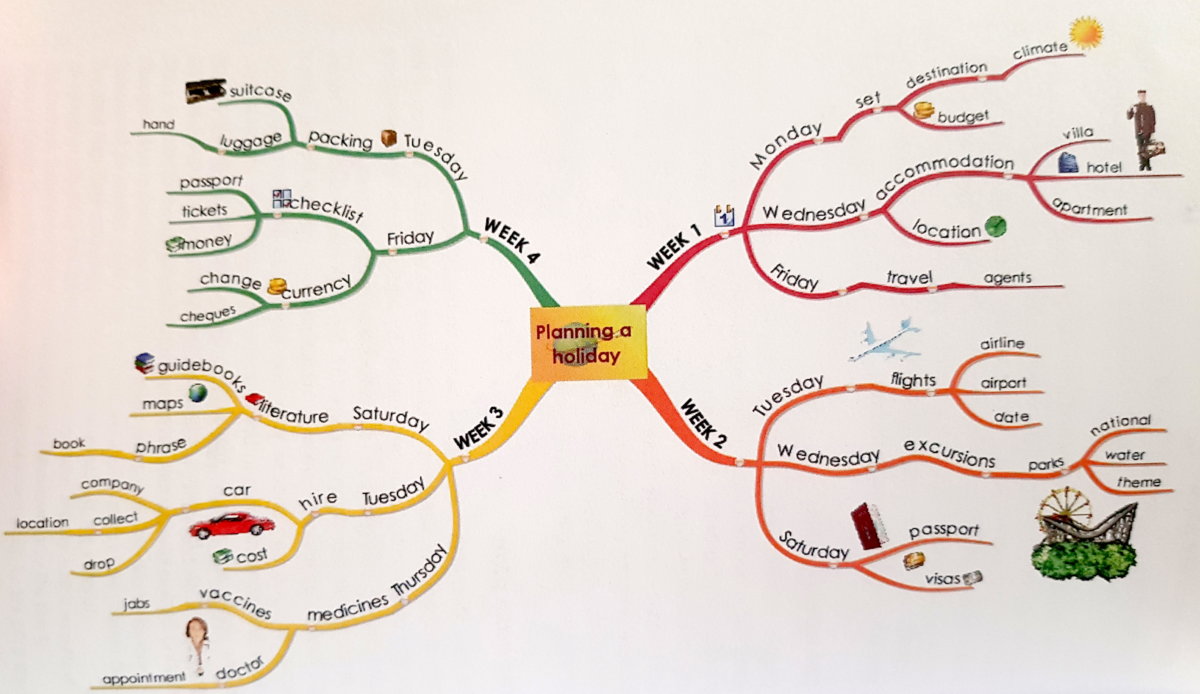
Credit: The Mind Map Book
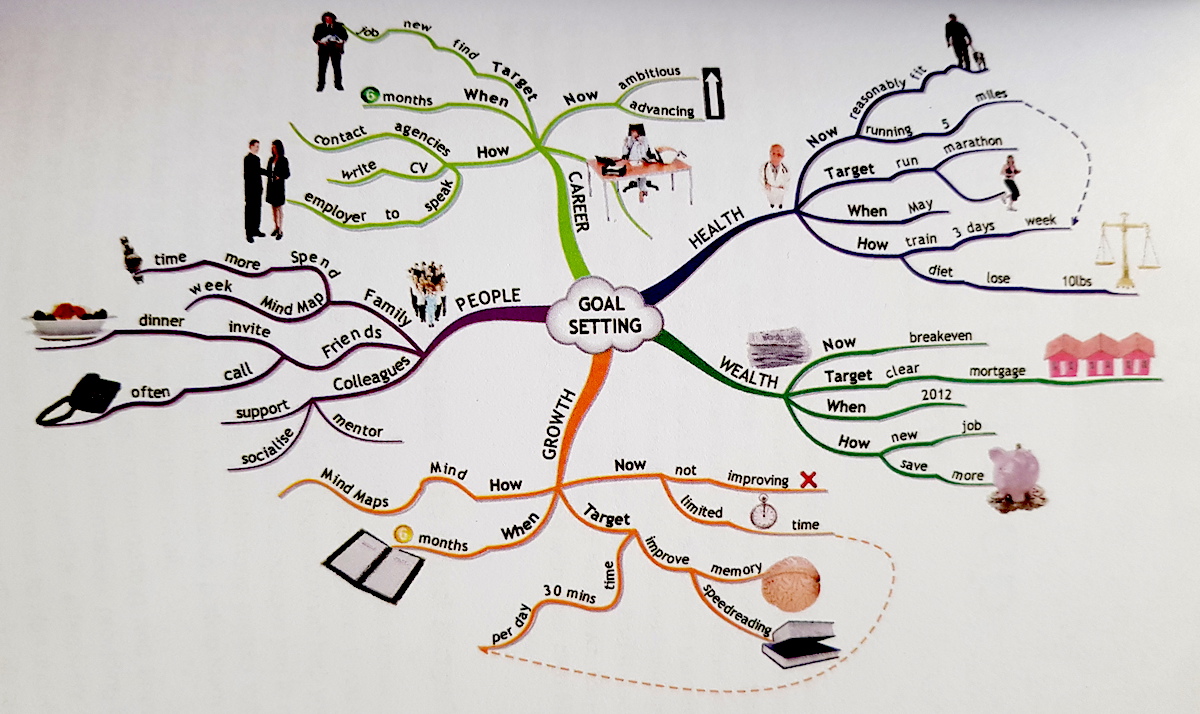
Credit: The Mind Map Book

Credit: Jayne Cormie
More tips to get the most of your mind map
- Do your mind map in landscape format to be able to put in as much as you want and have a clear vision.
- Use colourful pens, highlighters, pencils.
- Start in the middle with the initial idea, and go by instinct after that – trust the process and your brain to come up with the most relevant words or images.
- Draw if you feel like it, or use stickers!
- Don’t be afraid of “copying” other mind maps and get inspired by what others did, especially for the first one. It will be easier to do if you see what it looks like for other people.
- Find a space and an environment where you can focus on it without being interrupted. It can be a quiet room or a busy café, whatever works for you.
- There is no right or wrong answer. Just be creative!
- Complete the mind map in several instances. I personally find it useful to take a break, do other things to change my mind, and go back to it. Review your work after a few hours, a few days, even a few weeks.
- Make it impactful and useful for YOU.
Now go on and start yours! Think about a topic you want to explore, or see below for some inspiration:
- What do I want to change and how?
- Who am I?
- What are my 2019 resolutions?
- What x means to me? (where x can be fitness, health, relationships, work, etc.)
- What are my goals?
- How to be more/less x?
- What do I want to start/stop/continue doing?
Sources & other resources
- Buzan, T., & Buzan, B. (2007). The Mind Map Book. London: BBC Active.
- The Ultimate Mind Mapping Software. https://www.imindq.com/
- Mind Maps, GoConqr – https://www.goconqr.com/en/mind-maps/
